The Code Phase




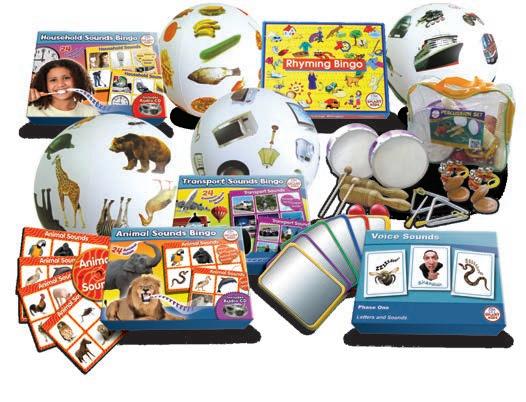
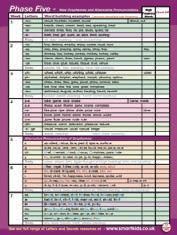
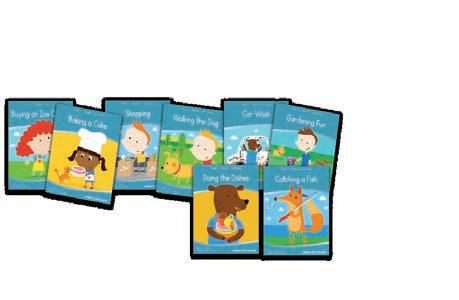
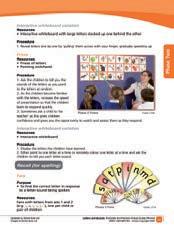
Covers the six phases of the Letters & Sounds programme which promotes a systematic synthetic phonics approach to reading and spelling. Includes notes for teachers, daily teaching guides, planning and progression, activities, banks of words and assessments. 200 pages, 210mm x 297mm.


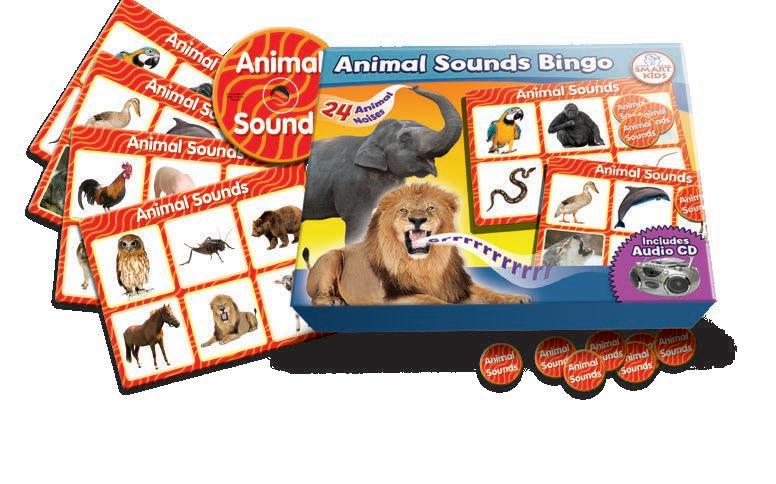

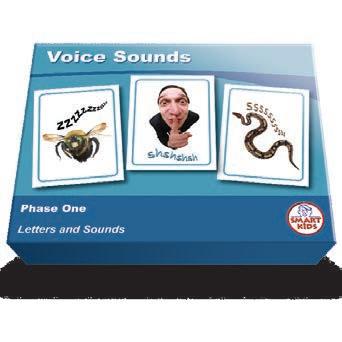


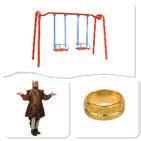
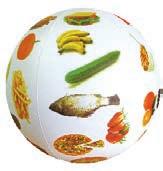
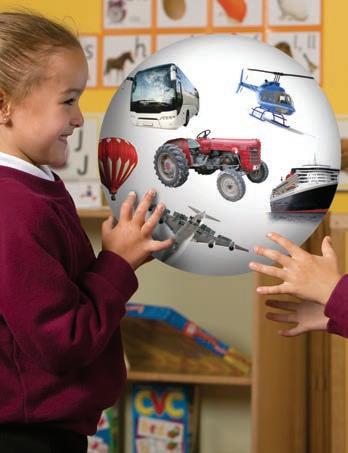

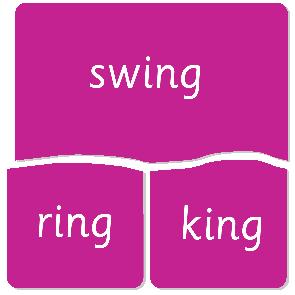

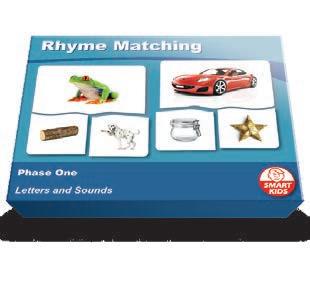
Phase One paves the way for the systematic teaching of phonic work, by developing speaking, listening and language skills through adult-led activities and high-quality play. Phase One activities are designed to underpin and run alongside activities in other phases. The activities are arranged under the following seven aspects. • Aspect 1: General sound discrimination – Environmental sounds 11 • Aspect 2: General sound discrimination – Instrumental sounds 16 • Aspect 3: General sound discrimination – Body percussion 20 • Aspect 4: Rhythm and rhyme 25 • Aspect 5: Alliteration 31 • Aspect 6: Voice Sounds 37 • Aspect 7: Oral blending and segmenting 42
While there is considerable overlap between these aspects, the overarching aim is for children to experience regular, planned opportunities to listen carefully and talk extensively about what they hear, see and do. The boundaries between each strand are flexible and not fixed: practitioners should plan to integrate the activities according to the developing abilities and interests of the children in the setting. Each aspect is divided into three strands.
• Tuning into sounds (auditory discrimination)
• Listening and remembering sounds (auditory memory and sequencing)
• Talking about sounds (developing vocabulary and language comprehension).
Activities within the seven aspects are designed to help children:
1. listen attentively; 2. enlarge their vocabulary; 3. speak confidently to adults and other children; 4. discriminate phonemes; 5. reproduce audibly the phonemes they hear, in order, all through the word; 6. use sound-talk to segment words into phonemes.
The ways in which practitioners and teachers interact and talk with children are critical to developing children’s speaking and listening. This needs to be kept in mind throughout all phase one activities.
Phase One falls largely within the Communication, Language and Literacy area of learning in the Early Years Foundation Stage. In particular, it will support linking sounds and letters in the order in which they occur in words, and naming and sounding the letters of the alphabet. It also draws on and promotes other areas of learning described in the Early Years Foundation Stage (EYFS), particularly Personal, Social and Emotional Development and Creative Development, where, for example, music plays a key part in developing children’s language. Phase One contributes to the provision for Communication, Language and Literacy; it does not constitute the whole language provision.
The activities in Phase One are mainly adult-led with the intention of teaching young children important basic elements of the Letters and Sounds programme such as oral segmenting and blending of familiar words. However, it is equally important to sustain and draw upon worthwhile, freely chosen activities that are provided for children in good early years settings and Reception classes. The aim is to embed the Phase One adult-led activities in a languagerich provision that serves the best interests of the children by fully recognising their propensity for play and its importance in their development.
It follows that the high quality play activities which typify good provision will offer lots of opportunities to enrich children’s language across the six areas of learning:
• Personal, Social and Emotional Development
• Communication, Language and Literacy
• Problem Solving, Reasoning and Numeracy
• Knowledge and Understanding of the World
• Physical Development
• Creative Development.
Practitioners and teachers will need to be alert to the opportunities afforded for language development through children’s play, and link learning from the Letters and Sounds programme with all six areas.
Experience shows that children benefit hugely by exposure to books from an early age. Right from the start, lots of opportunities should be provided for children to engage with books that fire their imagination and interest. They should be encouraged to choose and peruse books freely as well as sharing them when read by an adult.
Enjoying and sharing books leads to children seeing them as a source of pleasure and interest and motivates them to value reading.
Seeing an adult role model (such as a parent) engaged and enthused by books, magazines, letters and other written communication in their daily life, encourages children to want to read on an implicit level.
Letters and Sounds: Principles and Practice of High Quality Phonics
Revisions and updates © Smart Kids 2013 - included resources are not endorsed by any government agency © Crown copyright 2007
Practitioners and teachers should provide daily speaking and listening activities that are well matched to children’s developing abilities and interests, drawing upon observations and assessments to plan for progression and to identify children who need additional support, for example to discriminate and produce the sounds of speech.
A rich and varied environment will support children’s language learning through Phase One and beyond. Indoor and outdoor spaces should be well planned so that they can be used flexibly. For each aspect in Phase One, there are photographs and captions that illustrate the ways in which the learning environment can be designed to encourage children to explore and apply the knowledge and skills to which they have been introduced through the activities.
Oral blending and segmenting the sounds in words are an integral part of the later stages of Phase One. Whilst recognising alliteration (words that begin with the same sound) is important as children develop their ability to tune into speech sounds, the main objective should be segmenting words into their component sounds, and especially blending the component sounds all through a word.
Exploring the sounds in words should occur as opportunities arise throughout the course of the day’s activities, as well as in planned adult-led sessions with groups and individual children. Children’s curiosity in letter shapes and written words should be fostered throughout Phase One to help them make a smooth transition to Phase Two, when grapheme–phoneme correspondences are introduced. There is no requirement that children should have mastered all the skills in Phase One (e.g. the ability to supply a rhyming word) before beginning Phase Two.
The ways in which practitioners and teachers model speaking and listening, interact and talk with children are critical to the success of Phase One activities and to promoting children’s speaking and listening skills more widely. The key adult behaviours can be summarised as follows.
• Listen to encourage talking – time spent listening to children talk to each other, and listening to individuals without too frequent interruption, helps them to use more, and more relevant, language. This provides practitioners with insights into children’s learning in order to plan further learning, that is make assessments for learning. Practitioners should recognise that waiting time is constructive. It allows children to think about what has been said, gather their thoughts and frame their replies.
• Model good listening. This includes making eye contact with speakers, asking the sort of questions attentive listeners ask and commenting on what has been said. Effective practitioners adapt their spoken interventions to give children ample opportunities to extend their spoken communication.
• Provide good models of spoken English to help young children enlarge their vocabulary and learn, for example, how to structure comprehensible sentences, speak confidently and clearly, and sustain dialogue. Phase One activities are designed to foster these attributes.
Letters and Sounds: Principles and Practice of High Quality Phonics 00281-2007BKT-EN Revisions and updates © Smart Kids 2013 - included resources are not endorsed by any government agency © Crown copyright 2007
Effective assessment involves careful observation, analysis and review by practitioners of each child’s knowledge, skills and understanding in order to track their progress and make informed decisions about planning for the next steps of learning. This assessment for learning is key to the success of Phase One and for enabling practitioners to make principled, professional judgements about when children should begin a systematic phonics programme. For this reason, examples of what practitioners should focus their observations on are included after each set of the Phase One activities under the subheading ‘Look, listen and note’. These examples are designed to help practitioners keep a careful eye on children’s progress and will help to identify those who may need further practice and support before moving on, as well as supporting those who are capable of making rapid progress. By observing children, listening to them and noting their achievements, practitioners will be well placed to judge how well children are doing and plan next steps.
At the end of each aspect, the ‘Considerations’ section provides some indications of what practitioners need to reflect on to develop their practice and to ensure that the needs of all the children are met. For example, these sections suggest how activities may be extended where appropriate to provide greater challenge and encourage children to apply their developing language knowledge and skills more widely. Top Tips Top Tips
Record/video activities as evidence, to review certain sessions, or so that children can see, review and remember their own learning.
All phonics learning can become challenging if there are underlying issues present relating to the memory - particularly visual memory (letters) and auditory memory (sounds). A kinaesthetic/multisensory approach can therefore be very beneficial in learning to understand letters as a representation of sound.

• To develop children’s listening skills and awareness of sounds in the environment
• This is a listening activity that can take place indoors or outdoors.
Remind the children about the things that good listeners do (e.g. keep quiet, have ears and eyes ready). Invite the children to show you how good they are at listening and talk about why listening carefully is important. Encourage the children to listen attentively to the sounds around them. Talk about the different sounds they can hear. The children could use ‘cupped ears’ or make big ears on headbands to wear as they go on the listening walk. After the children have enjoyed a listening walk indoors or outdoors, make a list of all the sounds they can remember. The list can be in words or pictures and prompted by replaying sounds recorded on the walk.
• This is another activity that can take place indoors or outdoors.
Remind the children how to be good listeners and invite them to show how good they are at listening by remembering all the sounds they hear when they listen for a moment. It may be useful to use a sand timer to illustrate, for example, the passing of half a minute. Ask them what made each sound and encourage them to try to make the sound themselves.
Give each child a beater or make drumsticks, for example from short pieces of dowel. Encourage the children to explore the outdoor area and discover how different sounds are made by tapping or stroking, with their beaters, a wooden door, a wire fence, a metal slide, and a few items such as pipes and upturned pots you have ‘planted’. The activity could be recorded and/or photographed. Ask each child to demonstrate their favourite sound for the rest of the group. The whole group can join in and copy.
Ask each child to take up position ready to make their favourite sound. An adult or a child acts as conductor and raises a beater high in the air to signal the children to play loudly and lowers it to signal playing softly.
One child (the rescuer) is taken aside while a teddy bear is hidden somewhere in the room. Tell the other children they are going to guide the rescuer to the teddy by singing louder as the rescuer gets closer to, or quietly as the rescuer moves further away from the teddy. Alternatively lead the children in singing a familiar song, rhyme or jingle, speeding up and slowing down to guide the rescuer.
Letters and Sounds: Principles and Practice of High Quality Phonics
Revisions and updates © Smart Kids 2013 - included resources are not endorsed by any government agency © Crown copyright 2007
This can be an adult-led small group activity or can be provided within the setting as a freely chosen activity. Match pictures to pre-recorded sounds.

Look, listen and note how well children:
• recall sounds they have heard;
• discriminate between the sounds;
• describe the sounds they hear.
Main purpose
• Further development of vocabulary and children’s identification and recollection of the difference between sounds
There are many commercially available resources with prerecorded sounds to illustrate a simple sequence of events (e.g. a thunderstorm). Each child selects two or three picture cards that match the sounds, places the cards in the same order in which the sounds are heard and explains the sequence of events.
Turn a box on its side with the opening facing away from the children. One by one place between four and six familiar noisy items (e.g. a set of keys, crisp packet, squeaky toy) into the box, pausing to name them and demonstrate the sound each one makes.

Sing to the tune of ‘Old MacDonald’ but using your own name or one of the children’s:
Mrs…has a box ee i ee i o And in that box she has a…
Stop. Gesture and ask the children to listen. Handle one of the objects in the box, out of sight, to make a noise. The children take it in turns to guess what is making the sound. Continue the song but imitating the sound using your voice.
With a zzz zzz here and a zzz zzz there…
Allow the children to take a turn at making a noise from inside the box and use their names as you sing.

Letters and Sounds: Principles and Practice of High Quality Phonics
Revisions and updates © Smart Kids 2013 - included resources are not endorsed by any government agency © Crown copyright 2007
Set up a model farmyard. Describe one of the animals but do not tell the children its name. Say, for example: This animal has horns, four legs and a tail. Ask them to say which animal it is. Ask them to make the noise the animal might make. When they are familiar with the game let individual children take the part of the adult and describe the animal for the others to name.
This activity can be repeated with other sets of objects such as zoo animals, toy sets based on transport (e.g. aeroplane, car, train, bus, boat) and musical instruments. It can be made more challenging by introducing sets of random objects to describe and name.
Look, listen and note how well children:
• describe what they see;
• identify the animals and imitate the sounds;
• add new words to their vocabulary.
Main purpose
• To make up simple sentences and talk in greater detail about sounds
Partially fill either opaque plastic bottles or the toes of socks with noisy materials (e.g. rice, peas, pebbles, marbles, shells, coins). Ask the children to shake the bottles or socks and identify what is inside from the sound the items make. From the feel and the sound of the noisy materials encourage the children to talk about them. Ask questions such as: Where might we find shells and pebbles?
Make a poster or use a whiteboard for the children to record their favourite sounds pictorially. Invite them to put their sounds in order of popularity and talk about the ones they like the best. Ask the children to think about sounds that they do not like (e.g. stormy weather, barking dogs, car horns, crying babies) and to say why.
Involve the children in songs and stories, enlivened by role-play, props and repeated sounds, for example acting out: Humpty Dumpty sat on a wall, Humpty Dumpty had a great fall (bump, crash, bang!)
All the King’s horses and all the King’s men (gallop, gallop, gallop)
Couldn’t put Humpty together again (boo, hoo, boo, hoo, boo, hoo).
Look, listen and note how well children:
• identify different sounds and place them in a context;
• identify similar sounds;
• make up sentences to talk about sounds;
• join in the activities and take turns to participate.
Letters and Sounds: Principles and Practice of High Quality Phonics
Revisions and updates © Smart Kids 2013 - included resources are not endorsed by any government agency © Crown copyright 2007
• Use picture or symbol prompts to remind the children how to be a good listener. These could be displayed on the wall, on a soft toy or in a quiet listening den.
• As with all listening and attention activities, it is important to be aware that a busy environment can really hinder a child’s ability to tune in. Keep a listening area free from overly distracting wall displays, posters and resources in order to support very young children or those who find it hard to focus on listening.
• A small group size is preferable, to allow all of the children to have sufficient time to participate in and respond to the activity.
• Using gestures such as a finger to the lips alongside ‘shhh’ and a hand to the ear alongside listen will give vital clues to children who have difficulty with understanding or those who find it difficult to listen to the spoken instruction alone.
• Scan the group before giving any sound cue. Use a child’s name if necessary then make the sound immediately, when you have their attention.
• If parents or carers speak languages other than English, find out the word for ‘listen’ in the school community languages and use it when appropriate.
• If the children seem to recognise an object, but can’t recall its name, help them by prompting with questions, such as: What would you do with it? Where would you find it?
• As you lead the singing, take care to slow the song down. Slowing the pace can make a huge difference, helping children to understand the language used as well as giving them time to prepare and join in with the words or sounds.
• Forget conventional sound effects. For example, dogs don’t always bark ‘woof’. Big dogs can sound like ‘WUW WUW WUW’ and little ones give a squeaky ‘rap rap’. Vary the voice to add interest. These sounds are often more fun and even easier for the child to attempt to copy. Be daring. Include some less conventional animals (e.g. a parrot, a wolf) and see what sounds you come up with. You might include dinosaurs – many children love them and no one knows what noises they made so children can be as inventive as they like.
• Where parents or carers speak languages other than English, find out how they represent animal noises. Are woof, meow and quack universal? Which examples from other languages are the most like the real sounds?
Letters and Sounds: Principles and Practice of High Quality Phonics 00281-2007BKT-EN Revisions and updates © Smart Kids 2013 - included resources are not endorsed by any government agency © Crown copyright 2007
Children use home-made shakers to explore and learn how sounds can be changed.

Note which children can make up simple rhythms.
Observe how well the children listen to each other as they play in the band.
Playing with musical instruments outdoors encourages children to experiment with the sounds they can hear.
In their free play, children enjoy revisiting an adult-led activity.
New words to old songs 11
These activities promote speaking and listening through the use of musical instruments. They do not replace the rich music provision necessary for creative development in the wider educational programme.
• To experience and develop awareness
makers
Take a song or rhyme the children know well and invent new words to suit the purpose and the children’s interests. Use percussion instruments to accompany the new lyrics.
This activity uses two identical sets of instruments. Give the children the opportunity to play one set to introduce the sounds each instrument makes and name them all. Then one child hides behind a screen and chooses one instrument from the identical set to play. The other children have to identify which instrument has been played.
Develop the activity by playing a simple rhythm or by adding a song to accompany the instrument (e.g. There is a music man. Clap your hands) while the hidden instrument is played. This time the listening children have to concentrate very carefully, discriminating between their own singing and the instrument being played.
Children sit in a circle. Give the first child an instrument and ask them to make a quiet sound. Pass the instrument on to the next child and ask that child to make a loud sound with it. Keep going around the circle with students making quiet and loud sounds as indicated. Use hand gestures to indicate if the sound should be quiet or loud without speaking. Change instruments and follow the same procedure. Diversify the activity by adding in a rhythm.1
‘Grandmother’ has a range of instruments and the children decide what movement goes with which sound (e.g. shakers for running on tip-toe, triangle for fairy steps).

First an adult will need to model being Grandmother. Then a child takes the role.
Grandmother stands with her back to the others and plays an instrument. The other children move towards Grandmother in the manner of the instrument while it is playing. They stop when it stops. The first person to reach Grandmother takes over that role and the game starts again.
1 Activity changed from original Letters and Sounds document.
Letters and Sounds: Principles and Practice of High Quality Phonics 00281-2007BKT-EN Revisions and updates © Smart Kids 2013 - included resources are not endorsed by any government agency © Crown copyright 2007 11
Look, listen and note how well children:
• identify and name the instruments being played;
• listen and respond as the instrument is being played.
Main purpose
• To listen to and appreciate the difference between sounds made with instruments
Invite a small group of children to sit in a circle. Provide a selection of percussion instruments. One child starts the game by playing an instrument. The instrument is then passed round the circle and each child must use it to make the same sound or pattern of sounds as the leader. Start with a single sound to pass round the circle, and then gradually increase the difficulty by having a more complex sequence of sounds or different rhythms.
Look, listen and note
Look, listen and note how well children:
• are able to remember and repeat a rhythm;
• discriminate and reproduce loud and quiet sounds;
• are able to start and stop playing at the signal.
• To use a wide vocabulary to talk about the sounds instruments make.
As you read or tell stories, encourage the children to play their instruments in different ways (e.g. Make this instrument sound like giant’s footsteps, ... a fairy fluttering, ... a cat pouncing, ... an elephant stamping). Invite them to make their own suggestions for different characters (e.g. How might Jack’s feet sound as he tiptoes by the sleeping giant? And what about when he runs fast to escape down the beanstalk?). As the children become familiar with the pattern of the story, each child could be responsible for a different sound.
Hide the instruments around the setting, indoors or outdoors, before the children arrive. Ask the children to look for the instruments. As each instrument is discovered the finder plays it and the rest of the group run to join the finder. Continue until all the instruments are found to make an orchestra.
Invite groups of children to perform short instrumental music for others. The others are asked to say what they liked about the music. (They will need a selection of instruments or sound makers and some rehearsal time.)
Letters and Sounds: Principles and Practice of High Quality Phonics
Revisions and updates © Smart Kids 2013 - included resources are not endorsed by any government agency
Provide a variety of animal puppets or toys and a range of instruments. Encourage the children to play with the instruments and the animals. Discuss matching sounds to the animals. Give a choice of two instruments to represent a child’s chosen animal and ask the children to choose which sound is the better fit: Which one sounds most like the mouse? What do you think, David?
Look, listen and note how well children:
• choose appropriate words to describe sounds they hear (e.g. loud, fierce, rough, squeaky, smooth, bumpy, high, low, wobbly);
• match sounds to their sources;
• use sounds imaginatively to represent a story character;
• express an opinion about what they have heard.
• If a child is reluctant to attempt to copy actions with an instrument, spend a little time building confidence and interest in copying games. Present the child with a set of instruments. Have an identical set to hand. Allow the child to explore and copy back what the child does. Copying children’s actions can build confidence and make them feel their contribution is valued. If the activity results in an enjoyable copying game, the adult can subtly attempt to switch roles by taking up a different instrument and making a new sound for the child to copy.
• It will take a little while for some children to make a link between an animal and a corresponding instrument sound. Where necessary to support this, allow plenty of time for the children to play with the animal puppets or toys and talk about the sounds the animals make.
• Provide a variety of animal puppets or toys and a range of instruments. Sit alongside the children to play the instruments and encourage discussion about choices of instruments appropriate for the sounds the animals make.
• Encourage discussion with the children about why they have chosen the instrument to represent their particular animal.
The activities in Aspect 2 also provide opportunities to explore with the children their experience of music at home. Ask parents or carers whether they have any instruments they can bring in, either to play for the children or for the children to look at.
Revisions and updates © Smart Kids 2013 - included resources are not endorsed by any government agency © Crown copyright 2007
Using the outdoor area as much as possible encourages children to explore different ways of making sounds with their bodies.
Observe how well the children march, stamp and splash to a beat.
Listen to the children as they re-enact familiar stories.
Talk with children as they paint and comment on the movements and shapes they are making. • Stress simple sound patterns to accompany children’s mark-making.

Action songs
Pass the sounds
Roly Poly
Follow the sound
Noisy neighbour 1
Words about sounds
The Pied Piper
• To develop awareness of sounds and rhythms
Singing songs and action rhymes is a vital part of Phase One activities and should be an everyday event. Children need to develop a wide repertoire of songs and rhymes. Be sure to include multi-sensory experiences such as action songs in which the children have to add claps, knee pats and foot stamps or move in a particular way. Add body percussion sounds to nursery rhymes, performing the sounds in time to the beat. Change the body sound with each musical phrase or sentence. Encourage the children to be attentive and to know when to add sounds, when to move, and when to be still.
Ask children to stand in a circle. The first child starts by making a sound using a part of the body e.g. clap, jump, click, stamp etc. The next child copies the first sound and then adds in another sound. The next child must repeat the first two sounds and then add in a third sound. After the third sound the whole group should copy the sequence, before the game starts again with a different child and another sound. Visual prompts or initial adult models could be used to give ideas of different sounds that could be made. 1
Rehearse the rhyme with the actions (rotating hand over hand as in the song ‘Wind the bobbin up’).
Ro ... ly ... po ... ly ... ever ... so ... slowly Ro ... ly ... poly faster. (Increase the speed of the action as you increase the speed of the rhyme.)
Now add in new verses, such as: Stamp ... your ... feet ... ever ... so ... slowly Stamp ... your feet faster.
Ask the children to suggest sounds and movements to be incorporated into the song. Say hello ever so quietly Say HELLO LOUDER!
Look, listen and note how well children:
• produce contrasts in rhythm, speed and loudness;
• join in with words and actions to familiar songs;
• articulate words clearly;
1 Activity changed from original Letters and Sounds document.
• keep in time with the beat;
• copy the sounds and actions;
• make up patterns of sounds.
Letters and Sounds: Principles and Practice of High Quality Phonics 00281-2007BKT-EN Revisions and updates © Smart Kids 2013 - included resources are not endorsed by any government agency © Crown copyright 2007
Main purpose
• To distinguish between sounds and to remember patterns of sound
Invite a small group of children to sit in a circle. The adult begins by producing a body percussion sound which is then ‘passed’ to the child sitting next to them such as clap, clap, clap. The sound is to be passed around the circle until it returns to the adult. Ask: Do you think that the sound stayed the same all the way round? What changed? Did it get faster or slower? Make the activity more difficult by introducing a simple sequence of sounds for the children to pass on (e.g. clap, stamp, clap).
Noisy neighbour 1
This game needs two adults to lead it.
Tell a simple story about a noisy neighbour and invite the children to join in. Begin with: Early one morning, the children were all fast sleep – (ask the children to close their eyes and pretend to sleep) – when all of a sudden they heard a sound from the house next door.
At this point the second adult makes a sound from behind the screen. The story teller continues: Wake up children. What’s that noise?
The children take it in turns to identify the sound and then the whole group are encouraged to join in with: Noisy neighbour, please be quiet. We are trying to sleep.
Repeat the simple story line with another sound (e.g. snoring, brushing teeth, munching cornflakes, yawning, stamping feet, washing).
Encourage the children to add their own ideas to the story about the noisy neighbour.
Look, listen and note how well children:
• copy a body percussion sound or pattern of sounds;
• identify hidden sounds;
• suggest ideas and create new sounds for the story.
• To talk about sounds we make with our bodies and what the sounds mean
Noisy neighbour 2
(See ‘Noisy neighbour 1’ left)
Ask the children to suggest a suitable ending to the story. Discuss noises they like, noises that make them excited and noises that make them feel cross or sad. Ask when it is a good time to be noisy, and when it is best to be quiet or speak softly (e.g. when we need to listen). List the suggestions.
Ask Is this a time to be noisy or quiet? as you present scenarios such as when children are:
• at the swimming pool;
• in the library;
• at a party;
• with someone who is asleep;
• in the park;
• at a friend’s house when the friend is poorly;
• playing hide and seek.
It is important that adults engage with children in their freely chosen activities and introduce vocabulary that helps them to discriminate and contrast sounds, for example:
• slow, fast;
• quiet, loud;
• long, short;
• type of sound (click, stamp, etc.);
• type of movement (rock, march, skip, etc.).
Start with simple opposites that are obviously different (e.g. loud, quiet).
Listen to what the children have to say about the sounds they hear and then build on and expand their contributions and ideas.
Tell the story of the Pied Piper of Hamelin. Use different instruments for the Piper to play, with children moving in different ways in response. The child at the front decides on the movement and the rest of the group move in the same way. They follow the leader around the indoor or outdoor space, marching, skipping and hopping – vary the pace and describe the action: Fast, faster, slow, slower.
Introduce and model new words by acting them out (e.g. briskly, rapidly, lazily, sluggishly, energetically) for the children to copy and explore by acting them out in different ways.
Look, listen and note how well children:
• use language to make different endings to the story;
• use a wide vocabulary to talk about the sounds they hear;
• group sounds according to different criteria (e.g. loud, quiet, slow, fast)
• Remind the children to look and listen to the adult and also to each other.
• It might be necessary to demonstrate the sounds to the children before each activity starts in order to ‘tune them in’ and to encourage them to describe the sounds they hear.
• Be aware that some children may have difficulty coordinating the movements or actions to accompany songs and games. Give children plenty of time and space to practise large-scale movements every day.
• Some children may find it difficult to monitor their own volume without adult support.
Letters and Sounds: Principles and Practice of High Quality Phonics 00281-2007BKT-EN Revisions and updates © Smart Kids 2013 - included resources are not endorsed by any government agency © Crown copyright 2007

• To experience and appreciate rhythm and rhyme and to develop awareness of rhythm and rhyme in speech
Regularly include rhyming books as part of the daily book-sharing session. Read these books with plenty of intonation and expression so that the children tune into the rhythm of the language and the rhyming words. Encourage the children to join in with repetitive phrases such as Run, run, as fast as you can, You can’t catch me, I’m the Gingerbread Man. Wherever possible make the activity multi-sensory to intensify learning and enjoyment.
Make sure that singing and rhyming activities are part of the daily routine in small-group time and that extracts are repeated incidentally as events occur (e.g. It’s raining, it’s pouring as the children get ready to go outdoors in wet weather). Play with rhyming words throughout the course of the day and have fun with them. Sing or chant nursery rhymes and encourage the children to move in an appropriate way (e.g. rock gently to the beat of ‘See Saw Marjorie Daw’, march to the beat of ‘Tom, Tom the Piper’s Son’ and ‘The Grand Old Duke of York’, skip to the beat of ‘Here We Go Round the Mulberry Bush’).
Use a variety of percussion instruments to play different rhythms. Remind the children to use their listening ears and to move in time to the beat – fast, slow, skipping, marching, etc. Keep the beat simple at first (e.g. suitable for marching) then move on to more complex rhythms for the children to skip or gallop to.
Support a group of children to compile a book of their favourite rhymes and songs. They could represent the rhymes in any way they choose. The book can be used to make choices about which rhyme to say during singing time, or used for making independent choices in the book corner. Children may choose to act as teacher selecting rhymes for others to perform, individually or as a group.
Have a bag of objects which represent rhymes (e.g. a toy spider to represent ‘Incy Wincy Spider’, a toy bus for ‘The Wheels on the Bus’) and invite the children to choose their favourite.
Letters and Sounds: Principles and Practice of High Quality Phonics
Revisions and updates © Smart Kids 2013 - included resources are not endorsed by any government agency
Ask a small group to sit in a circle so they can see a selection of rhyming objects (e.g. rat, hat, cat) placed on the floor. Use a bowl and spoon as props to act out the song. Invite the children, in turn, to choose an object to put into the soup and place it in the bowl. After each turn, stir the soup and sing the following song to recite the growing list of things that end up in the soup.
Sing the first part of the song to the tune of ‘Pop Goes the Weasel’:
I’m making lots of silly soup
I’m making soup that’s silly I’m going to cook it in the fridge
To make it nice and chilly In goes... a fox... a box... some socks...
Give each child in a small group a set of three pictures of objects with rhyming names. (Such pictures are readily available commercially.) Hide in a bag a set of pictures or objects matching the pictures you have given to the children. The children take turns to draw out of the bag one object or picture at a time. Invite the children to call out when they see an object or picture that rhymes with theirs and to collect it from the child who has drawn it from the bag. After each rhyming set is completed chant together and list the rhyming names. As you name objects give emphasis to the rhyming pattern.
Ordering Code: L05
Gather together a set of familiar objects with names that have varying syllable patterns (e.g. pencil, umbrella, camera, xylophone). Show the objects to the children, name them and talk about what they are used for. Wait for the children to share some of their experiences of the objects; for instance, some of them will have used a camera. Then encourage them to think about how the name of the object sounds and feels as they say it. Think about the syllables and clap them out as you say each word. Then clap the syllables for a word without saying it and ask: What object could that be?
As children gain confidence try some long words like binoculars, telephone, dinosaur.
Look, listen and note how well children:
• understand the pattern of syllables in the words presented to them;
• sing or chant the rhyming string along with the adult;

• recognise that the words rhyme;
• join in with simple or complex rhythms;
• copy the rhythm;
• keep to the beat.
Letters and Sounds: Principles and Practice of High Quality Phonics 00281-2007BKT-EN Revisions and updates © Smart Kids 2013 - included resources are not endorsed by any government agency © Crown copyright 2007
• To increase awareness of words that rhyme and to develop knowledge about rhyme
In a pairs game, use pictures of objects with names that rhyme. The children take it in turns to turn two cards over and keep them if the pictures are a rhyming pair. If they are not a rhyming pair, the cards are turned face down again and the other person has a turn. Start with a small core set of words that can then be extended.
The children need to be familiar with the rhyming word families before they can use them in a game – spend time looking at the pictures and talking about the pairs.
Include a selection of songs within the daily singing session which involve children in experimenting with their voices. Simple nursery rhymes, such as ‘Hickory, Dickory, Dock’ provide an opportunity for children to join in with wheeee as the mouse falls down. Use this to find related words that rhyme: dock, clock, tick-tock. Substitute alternative rhyming sounds to maintain children’s interest and enjoyment.
Use books with predictable rhymes that children are familiar with and then stop as you come to the final word in the rhyme. Invite children to complete it. Use plenty of intonation and expression as the story or rhyme is recounted.
Look, listen and note how well children:
• recognise rhyming words;
• listen and attend to the rhyming strings.
• To talk about words that rhyme and to produce rhyming words
Make up silly rhyming names for a pair of puppets (e.g. Fizzy Wizzy Lizzy and Hob Tob Bob). Introduce the puppets to a small group and invite them to join in story telling, leaving gaps for the children to fill in rhyming words, for example:
Are you poorly Lizzy? Oh dear. Fizzy Wizzy Lizzy is feeling sick and...dizzy.
Bob is very excited. Today he is going to be a builder. Hob Tob Bob has got a new...job.
Put out three objects or pictures, two with names that rhyme and one with a name that does not. Ask the child to identify the ‘odd one out’: the name that does not rhyme. Start with a small set of words that can then be extended. The children need to be familiar with the rhyming word families before they can use them in a game – spend time looking at the pictures and talking about the pairs.
Throughout the course of daily activities, encourage the children to think about and play with rhyming words. The adult begins with the prompt I know a word that rhymes with cat, you need to put one on your head and the word is...hat. This can be used for all sorts of situations and also with some children’s names: I know a girl who is holding a dolly, she is in the book corner and her name is...Molly. As children become familiar with rhyme, they will supply the missing word themselves.
Look, listen and note how well children:
• generate their own rhymes;
• complete sentences using appropriate rhyming words;
• make a series of words that rhyme.
• It is important for children to experience a rich repertoire of poems, rhymes and songs. They need to build a stock of rhymes through hearing them repeated in different contexts. Parents and carers can play a valuable role in developing children’s repertoires of rhymes. Keep parents and carers informed of any new rhymes you are learning with the children so that the adults can join in when the children start to sing them at home.
• For children learning EAL, songs and rhymes are a particularly effective way to remember whole sentences and phrases by tuning into the rhythm that accompanies them. This in itself is good practice for developing the speech patterns of the language; it is also important to attach meaning and ensure that contexts are understood.
• Encouraging nonsense rhymes is a good way for children to begin to generate and produce rhyme. While a child is developing speech sounds the normal immaturities in their speech may mean their version of a word is different from that of the adults in the setting (e.g. the adult prompts with You shall have a fish on a little and the child joins in with dit). The adult then repeats back the correct articulation, ‘dish’.
• When children experiment with nonsense rhymes they are not confined by their own learned versions of words and so can tune into and produce rhyming patterns.
• Keep the songs slow so you can emphasise the rhyming patterns.
• Collecting a set of objects or producing pictures of objects with rhyming names can be time-consuming but this resource is essential to build experience of rhyme into children’s play. A set of cards from a commercially available rhyming lotto set can prove to be a versatile resource for many different activities.
• Generating rhymes is a difficult skill to master. Accept all the children’s suggestions. Where the children do manage to fill in with the target rhyming word, congratulate them on having done so and draw attention to the rhyming pattern.
• Children learning EAL often internalise chunks of language and may not hear where one word starts and another ends. They may continue to use many of these chunks of language for some time before they begin to segment the speech stream in order to use the constituent words in new contexts.
• When children can supply a list of rhyming words and non-words, after being given a start, they can be considered to be well on the way to grasping rhyme (e.g. adult says cat, mat, sat...and the child continues fat, pat, mat, rat). However, children may well be at a later phase of this programme before they can do this. There is no need to delay starting Phase Two until children have mastered rhyming.
Letters and Sounds: Principles and Practice of High Quality Phonics
Revisions and updates © Smart Kids 2013 - included resources are not endorsed by any government agency © Crown copyright 2007

• To develop understanding of alliteration
With a small group of children sitting in a circle, start the game by saying I spy someone whose name begins with... and give the sound of the first letter, for example ‘s’ for Satish. Then ask: Who can it be? Satish stands up, everyone says his name and he carries on the game, saying I spy someone whose name begins with..., and so on. If any children call out the name before the child with that name, still let the child whose name it is take the next turn.
If the children find separating out the first sound too hard in the early stages, the adult can continue to be the caller until they get the hang of it.
Make sure that word play with initial sounds is commonplace. Include lots of simple tongue twisters to ensure that children enjoy experimenting with words that are alliterative. Use opportunities as they occur incidentally to make up tongue twisters by using children’s names, or objects that are of particular personal interest to them (e.g. David’s dangerous dinosaur, Millie’s marvellous, magic mittens).
Before the activity begins, think of some strange names for alien creatures. The alien names must be strings of non-words with the same initial sound, for example:
Ping pang poo pop, Mig mog mully mo, Fo fi fandle fee.
Write them down as a reminder.
Talk to the children about the names and help them to imagine what the strange creatures might look like. Provide creative or construction materials for the children to make their own alien.
Comment as the children go about shaping the aliens and use the aliens’ strange names. Invite the children to display their aliens along with the aliens’ names.
Make the pattern clearer by emphasising the initial sound of an alien’s name. Draw the children’s attention to the way you start each word with the shape of your lips, teeth and tongue.
Collect two sets of objects suitable for use in the sand tray. Each set of objects must have names beginning with the same initial sound. Choose initial sounds for each set that sound very different from one another. Bury the objects in preparation for the session.
As the children uncover the treasure, group the objects by initial sound and each time another is added recite the content of that set: Wow! You’ve found a car. Now we have a cup, a cow, a candle and a car.
Set up a small toy zoo and join the children as they play with it. Use a toy bus and a bag of animal toys with names starting with the same sound (e.g. a lion, a lizard, a leopard, a llama and a lobster) to act out this story. Chant the following rhyme and allow each child in turn to draw an animal out of the bag and add an animal name to the list of animals spotted at the zoo.
Bertha the bus is going to the zoo, Who does she see as she passes through? ... a pig, a panda, a parrot and a polar bear.
Look, listen and note how well children:
• identify initial sounds of words;
• reproduce the initial sounds clearly and recognisably;
• make up their own alliterative phrases.
©
• To listen to sounds at the beginning of words and hear the differences between them
Tony the Train’s busy day
Use a toy train and selection of objects starting with the same sound. A small group of children sits in a circle or facing the front so they can see objects placed on the floor. Use the props to act out a story with the train.
It was going to be a busy day for Tony. He had lots to do before bedtime. So many packages to deliver and so many passengers to carry. He set out very early, leaving all the other engines at the station, and hurried off down the track, clackedy clack down the track, clackedy clack down the track...
But he hadn’t gone very far when...!!! He saw something up ahead lying on the tracks. ‘Oh no!’ yelled Tony. ‘I must s – t – o – p.’ And he did stop, just in time. To Tony’s surprise there on the track lay a big brown bear, fast asleep.
‘I had better warn the others,’ thought Tony and so he hurried back to the station, clackedy clack going back, clackedy clack going back. Tony arrived at the station quite out of puff. ‘Whatever is the matter?’ said the other engines. ‘Toot, toot, mind the...big, brown bear’ panted Thomas. ‘He’s fast asleep on the track.’ ‘Thank you,’ said the others, ‘We certainly will.’
Continue with the whole object set and encourage the children to join in with saying the growing list of objects. Remember to give emphasis to the initial sound.
The aim is to have the group chant along with you as you recite the growing list of objects that Tony finds lying on the track. Make up your own story using the props and ask: What do you think happens next?
Put a chair in each corner of the room, or outdoors. Collect four sets of objects, each set containing objects with names that start with the same sound. (Four different initial sounds are represented.) Keep back one object from each set and place the remaining sets on each of the four chairs.
At first, the children sit in a circle or facing you. Name each of the four sets of objects, giving emphasis to the initial sound.
Explain that now there will be music to move around or dance to and that when the music stops the children are to listen. You will show them an object and they should go to the corner where they think it belongs.
Make collections of objects with names beginning with the same sound. Create a song, such as ‘What have we got in our sound box today?’ and then show the objects one at a time. Emphasise the initial sound (e.g. s-s-s-snake, s-s-s-sock, s-s-s-sausage).
Letters and Sounds: Principles and Practice of High Quality Phonics
Revisions and updates © Smart Kids 2013 - included resources are not endorsed by any government agency © Crown copyright 2007
Look, listen and note how well children:
• can recall the list of objects beginning with the same sound;
• can offer their own sets of objects and ideas to end the story;
• discriminate between the sounds and match to the objects correctly.
•
• To explore how different sounds are articulated, and to extend understanding of alliteration
Call out a child’s name and make up a fun sentence starting with the name (e.g. Ben has a big, bouncy ball, Kulvinder keeps kippers in the kitchen, Tim has ten, tickly toes, Fiona found a fine, fat frog). Ask the children to think up similar sentences for their own names to share with others.
Provide a mirror for each child or one large enough for the group to gather in front of. Play at making faces and copying movements of the lips and tongue. Introduce sound making in the mirror and discuss the way lips move, for example, when sounding out ‘p’ and ‘b’, the way that tongues poke out for ‘th’, the way teeth and lips touch for ‘f’ and the way lips shape the sounds ‘sh’ and ‘m’.

Provide the children with a selection of items with names that begin with the same sound. Show them how you can make some ‘silly soup’ by putting ‘ingredients’ (e.g. a banana, bumble bee and bug) into a pan in the role-play area.
Set of 6 Mirrors Ordering Code: X17
Allow the children to play and concoct their own recipes. Play alongside them without influencing their choices. Commentate and congratulate the children on their silly recipes. Recite each child’s list of chosen ingredients. Make the pattern clear by emphasising the initial sound. By observing mouth movements draw the children’s attention to the way we start each word and form sounds.
Look, listen and note how well children:
• can articulate speech sounds clearly;
• select an extended range of words that start with the same sound.
Letters and Sounds: Principles and Practice of High Quality Phonics
Revisions and updates © Smart Kids 2013 - included resources are not endorsed by any government agency © Crown copyright 2007
• Singing rhymes and songs with alliterative lines such as ‘Sing a Song of Sixpence’ and playing with jingles such as ‘Can you count the candles on the cake?’ helps to tune children’s ears to the relationships between the sound structures of words. Ultimately children need to be able to isolate the initial phoneme from the rest of word (e.g. to be able to say that ‘nose’ begins with the sound ‘n’). Children need to have a wealth of experience of hearing words that begin with the same sound so it is important to keep practising familiar tongue twisters and also to be inventive with new ones to model alliterative possibilities to the children.
• Do not expect all the children to be able to produce a full range of initial sounds or be able to produce the initial clusters such as ‘sp’ for spoon. Just make sure that each child’s attention is gained before reciting the string of sounds so that they can experience the initial sound pattern as it is modelled for them.
• These activities may reveal speech difficulties that may require investigation by a specialist such as the local speech and language therapist.
• Not all children will be happy to participate in copying games. Some may feel selfconscious or be anxious about getting the game wrong. One way to encourage copying is to lead the way by copying what the children do in the mirror and encouraging them to copy one another before asking them to copy your sounds and movements.
• Take care to whisper when modelling quiet sounds. Do not add an ‘uh’ to the end of sounds:
• ‘ssss’ not ‘suh’ • ‘mmm’ not ‘muh’ • ‘t’ not ‘tuh’ • ‘sh’ not ‘shuh’.
• Some children may be aware of the letter shapes that represent some sounds. While grapheme–phoneme correspondences are not introduced until Phase Two, it is important to be observant of those children who can identify letter shapes and sounds and to encourage their curiosity and interest.
• Be prepared to accept suggestions from children learning EAL who have a well developed vocabulary in their home language, but be aware that words in home languages will not always conveniently start with the same sound as the English translation. Children very soon distinguish between vocabulary in their home language and English.
Letters and Sounds: Principles and Practice of High Quality Phonics 00281-2007BKT-EN Revisions and updates © Smart Kids 2013 - included resources are not endorsed by any government agency © Crown copyright 2007

• To distinguish between the differences in vocal sounds, including oral blending and segmenting
Explore different mouth movements with children – blowing, sucking, tongue stretching and wiggling. Practising these movements regularly to music can be fun and helps children with their articulation.
Show children how they can make sounds with their voices, for example:
• Make your voice go down a slide – wheee!
• Make your voice bounce like a ball – boing, boing

• Sound really disappointed – oh
• Hiss like a snake – ssssss
• Keep everyone quiet – shshshsh
• Gently moo like a cow – mmmoooo
• Look astonished – oooooo!
• Be a steam train – chchchchch
• Buzz like a bumble bee – zzzzzzz
• Be a clock – tick tock.
Voice Sounds Cards Ordering Code: LT10
This can be extended by joining single speech sounds into pairs (e.g. ee-aw like a donkey).
Top Tips
Get children to record themselves making different sounds (and play them back), so that they can clearly hear the actual sounds that they are making using their voices. Use mirrors, so that children can see the movement of the mouth and tongue as they make different sounds.
Kids 2013 - included resources are not endorsed by any government agency
Make amplifiers (trumpet shapes) from simple cones of paper or lightweight card and experiment by making different noises through the cones. Model sounds for the children: the up and down wail of a siren, the honk of a fog horn, a peep, peep, peep of a bird. Contrast loud and soft sounds. Invite the children to share their favourite sound for the rest of the group to copy. Use the trumpets to sound out phonemes that begin each child’s name.
Encourage a small group of children to sit in a circle or facing the front so they can see you and Metal Mike (a toy robot computer). Have ready a bag of pictures of objects (e.g. cat, dog, mug, sock) and sound out and blend the phonemes in their names. Ask each child in turn to take out a picture or an object from a bag. Hold it up and tell the group that Metal Mike is a computer and so he talks with a robot voice. Ask the children to name the object as Metal Mike would and demonstrate it for them in a robotic voice (e.g. ‘c-a-t’). Feed the object or picture into Metal Mike and encourage the group first to listen to you and then join in as you say the word exaggerating the sound of each phoneme, followed by blending the phonemes to make the word.
Look, listen and note how well children: • distinguish between the differences in vocal sounds.
If you don’t have a toy computer - stick the following on to a box to make your own ‘Metal Mike’

• To explore speech sounds
Working with a small group of children, an adult makes a long sound with their voice, varying the pitch (e.g. eeeeeee). The next person repeats the sound and continues as the next joins in, to form a chain. The sound gets passed as far round the circle as possible. Start again when the chain is broken.
Give each child a target sound to put into a story when they hear a particular word or character (e.g. make a ‘ch’ sound when they hear the word ‘train’).
Start with a single sound that the small group of children can make together when they hear a target word. Be prepared to prompt initially and leave pauses in your reading to make it obvious where the sounds are required.
Record some children talking while they are busy with a freely chosen activity and play the recording to a larger group. Can the children identify each other’s voices? Create a ‘talking book’ for the group or class with photographs of each child and help them to record their own voice message – My name is…, I like singing, etc.
Record the children using their voices to make suitable sounds for simple pictures (e.g. of animals, a steam train, a doorbell, a clock). Ask them to listen to the recording later and match each sound to a picture.
Look, listen and note how well children:
• sustain their listening throughout a story;
• listen for a target word or character and respond with an appropriate associated speech sound;
• remember the sound sequence and produce it when required;
• recognise their own and each other’s voices, including a recorded voice.
• To talk about the different sounds that we can make with our voices
After making a sound with your voice, talk about the ‘features’ of the sound with the children – was it a long sound, a loud sound, did it change from high to low, etc.?
Introduce vocabulary gradually with examples and visual cues (e.g. symbols and pictures) to help the children who have difficulty understanding. Then introduce new vocabulary to the children to help them describe the sound (e.g. to talk about high and low pitch).
Discuss with the children how they can use their voices to add sounds to stories such as Bear Hunt, Chicken Licken or The Three Billy Goats Gruff.
Repeat favourite rhymes and poems in different voices together (e.g. whispering, growling, shouting, squeaking) and discuss the differences.
Provide small mirrors for the children to observe their faces, lips, teeth and tongue as they make different speech sounds and experiment with their voices.
Provide home-made megaphones in the outside area so the children can experiment with different speech sounds and their volume.
Provide simple animal masks, and tails if possible, to encourage the children to dramatise animal movements and sounds.
Provide a wide selection of rhymes and songs on CD or tape so that the children can choose to listen to and join in with their favourites, and can extend their repertoire.
Look, listen and note how well children:
• use appropriate vocabulary to talk about different voice and speech sounds.
•
• Changes in voice and exaggerated facial expressions help to support listening and attention by building interest and anticipation. For some children, these clues are also vital to supporting their understanding of the story.
• Tuning in to what the child is doing and joining in with them tells the child you are listening to them.
• Children in the early stages of learning EAL may need time to observe others and rehearse the spoken challenge; as in any turn-taking activities they should not be asked to take the first turn.
• For extension, linguistic diversity and fun, where parents and carers speak languages other than English, find out how they represent, for example, animal noises. Are woof, meow and quack universal? Which examples from other languages are the most like the real sounds?
Letters and Sounds: Principles and Practice of High Quality Phonics 00281-2007BKT-EN Revisions and updates © Smart Kids 2013 - included resources are not endorsed by any government agency © Crown copyright 2007
7: Oral blending and segmenting
Encourage the children to vocalise as they play on the hoppers ‘h’ ‘h’ ‘h’ ‘h’
When children choose to play with the sound talk toys, listen out to how well they are trying to segment words into phonemes.
As children play with the balls, bounce a ball alongside them making the sound ‘b’ ‘b’ ‘b’ • When children are in the writing area, note whether they are beginning to say their messages aloud as they write, as they have seen adults do.
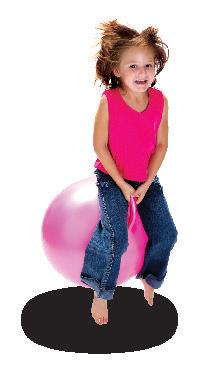
It is important that the children have plenty of experience of listening to adults modelling oral blending before they are introduced to grapheme–phoneme correspondences. For example, when giving children instructions or asking questions the adult can segment the last word into separate phonemes and then immediately blend the sounds together to say the word (e.g. it’s time to get your c-oa-t, coat! or Touch your t-oe-s, toes! Who can touch their f-ee-t, feet?) Use only single-syllable words for oral blending.
Oral blending can also be modelled from time to time when books are being shared, particularly rhyming books where the last word in a rhyming couplet could be segmented into separate sounds and then blended by the adult.
Introduce to the children a soft toy that can only speak in ‘sound-talk’. The children see the toy whispering in the adult’s ear. To add to the activity, as the toy whispers the adult repeats the sounds, looks puzzled and then says the word straight afterwards. For example: What would Charlie like for tea today? The toy speaks silently in the adult’s ear and the adult repeats ‘ch-ee-se’ looking puzzled and then, says with relief ‘cheese!’ Now invite the children to see if they can speak like the toy: Do you think you could try to toy talk? Say ch-ee-se: (the children repeat ‘ch-ee-se’). Ask the toy again What else would you like? Be careful to think of items with names of only single syllables (e.g. fish, cake, pie, soup).
Use different scenarios: What does the toy like to do in the playground? (hop, skip, jump, run, etc.). As the children become more confident, make some errors – blend ‘skim’ for ‘skip’, for example, and ask them to catch you out by giving the correct blend.
Encourage the children to ask the toy questions with yes/no answers (e.g. Can you sing? Y-e-s/N-o). Or ask the toy the colour of his bike, his bedroom walls, his jumper, etc. and the toy will answer r-e-d, b-l-ue, g-r-ee-n, m-au-ve.
Think of words using the letters ‘s, a, t, p, i, n’ (e.g. sat, pin, nip, pat, tap, pit, pip) and sound them out, clapping each phoneme with the children in unison, then blend the phonemes to make the whole word orally. As children’s confidence develops, ask individuals to demonstrate this activity to others.
Which one?
Lay out a selection of familiar objects with names that contain three phonemes (e.g. leaf, sheep, soap, fish, sock, bus). Check that all the children can recognise each object.
Letters and Sounds: Principles and Practice of High Quality Phonics 00281-2007BKT-EN Revisions and updates © Smart Kids 2013 - included resources are not endorsed by any government agency © Crown copyright 2007
Bring out the sound-talking toy and ask the children to listen carefully while it says the names of one of the objects in sound-talk so they can help it to put the sounds together and say the word. The toy then sound-talks the word, leaving a short gap between each sound. Encourage the children to say the word and identify the object. All the children can then repeat the sounds and blend them together – it is important that they do this and don’t simply listen to the adult doing so.
Choose a selection of objects with two or three phonemes as above. There can be more than one of the same object. Make a river across the floor or ground outside with chalk or ropes. Give each child or pair of children an object and check that all the children know the names of the objects. The toy calls out the name of an object in sound-talk (e.g. p-e-g). The children who have that object blend the sounds to make the word and cross the river.
Place on the floor or on a table a selection of objects with names containing two or three phonemes (e.g. zip, hat, comb, cup, chain, boat, tap, ball). Check that all the children know the names of the objects. The toy says I spy with my little eye a z-i-p. Then invite a child to say the name of the object and hold it up. All the children can then say the individual phonemes and blend them together ‘z-i-p, zip’. When the children have become familiar with this game use objects with names that start with the same initial phoneme (e.g. cat, cap, cup, cot, comb, kite). This will really encourage the children to listen and then blend right through the word, rather than relying on the initial sound.
Look, listen and note how well children:
• blend phonemes and recognise the whole word;
• say the word and identify the object;
• blend words that begin with the same initial phoneme.
• To listen to phonemes within words and to remember them in the order in which they occur
Invite a small group of children to come and talk to the toy in sound-talk, for example just before dinner time: Let’s tell the toy what we eat our dinner with. Discuss with the children and agree that we use a knife and fork. Then tell the toy in sound-talk which the children repeat. Continue with: Let’s tell the toy what we drink out of. Confer and agree on ‘cup’. Repeat in sound-talk for the toy to listen and then invite the children to do the same. Ask the children to think of other scenarios which they could tell the toy or let them give him instructions. Then model the sound-talk for the children to repeat. This is teaching the children to segment words into their separate sounds or phonemes and is the reverse of blending. The children will soon begin to start the segmenting themselves.
Letters and Sounds: Principles and Practice of High Quality Phonics 00281-2007BKT-EN Revisions and updates © Smart Kids 2013 - included resources are not endorsed by any government agency © Crown copyright 2007
Leave the sound-talk toy freely available to the children for them to practise and experiment with sound-talk. On special occasions, weekends or holidays, the toy may go on adventures or go to stay at the children’s homes. When he returns he will have lots to tell the children about his escapades – in sound-talk.
When the children are used to hearing the toy say words in sound-talk and blending the individual sounds to make words, you may be able to ask some children to see whether they can speak in sound-talk. Choose some objects with three-phoneme names that you are sure the children know and hide them in a box or bag. Allow one of the children to see an object, and then ask them to try to say the separate sounds in the name of the object, just like the toy does (e.g. d-u-ck). The other children then blend the sounds together to make the word. The child can then reveal the object to show whether the other children are right.
Look, listen and note how well children:
• segment words into phonemes.
Main purpose
• To talk about the different phonemes
When children are used to oral blending, and can readily blend two and three phonemes to make words, introduce the idea of counting how many phonemes they can hear. For example: p-i-g, pig. If we say the phonemes in that word one by one, how many phonemes can we hear? Let’s use our fingers to help us: p-i-g, one, two, three phonemes.
Look, listen and note how well children:
• identify the number of phonemes that make up a given word.
Letters and Sounds: Principles and Practice of High Quality Phonics 00281-2007BKT-EN Revisions and updates © Smart Kids 2013 - included resources are not endorsed by any government agency © Crown copyright 2007
• During Phase One, there is no expectation that children are introduced to letters (graphemes). Of course some children may bring knowledge of letters from home, and be interested in letters they see around them on signs, displays and in books. Practitioners and teachers should certainly respond to children’s comments and queries about letters and words in print.
• Children who can hear phonemes in words and sound them out accurately are generally well placed to make a good start in reading and writing.
• Children learning EAL generally learn to hear sounds in words very easily.
• Children need to hear the sounds in the word spoken in sound-talk immediately followed by the whole word. Avoid being tempted to ask any questions in between such as I wonder what that word can be? or Do you know what that word is? The purpose is to model oral blending and immediately give the whole word.
• It is important only to segment and blend the last word in a sentence or phrase and not words that occur at the beginning or middle of the sentence. Over time and with lots of repetition, the children will get to know the routine and as they gain confidence they will provide the blended word before the adult.
• Using a toy is preferable to a puppet because it is important that children watch the adult’s face and mouth to see the sounds being articulated clearly, rather than focusing on the imitated movements of the puppet.
• It is very important to enunciate the phonemes very clearly and not to add an ‘uh’ to some (e.g.‘ssssssss’ and not ‘suh’, ‘mmmmmmmm’ and not ‘muh’).
• Avoid using words with adjacent consonants (e.g. ‘sp’ as in ‘spoon’) as these will probably be too difficult for children at the early stages of practising blending and segmenting.
• Once children have been introduced to blending and segmenting they should be practised hand in hand as they are reversible processes.
Revisions and updates © Smart Kids 2013 - included resources are not endorsed by any government agency